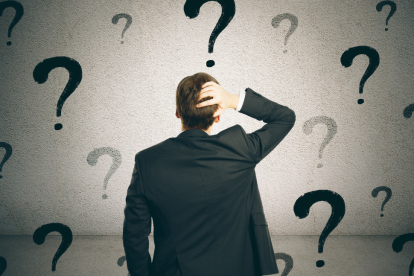
Bipolar Disorder
In any given year almost six million American adults will suffer from bipolar disorder. People with bipolar disorder experience alternating depressive and manic states that vary in length, intensity, and capacity to limit normal functioning. While bipolar can be highly disabling it is also highly treatable, and those who seek help for their conditions have a good chance of achieving a lasting recovery.
What is Bipolar Disorder?
Bipolar disorder is a form of mental illness that produces disruptive and uncontrollable emotional imbalances. Unlike simple mood swings, the depressive and manic states of this mood disorder can be life-altering medical conditions that inhibit normal functioning, and without treatment they are likely to get progressively worse (and increasingly disabling) over time.
With its dual nature, bipolar disorder puts sufferers through an emotional roller coaster. People with bipolar disorder experience highs and lows of an unpredictable duration and intensity.
Manic periods are generally followed by periods of depression, although sufferers may escape the cycle for a while and maintain their emotional equilibrium for weeks or months. But eventually the symptoms of bipolar will return, since the disorder will never go into remission on its own.
According to statistics compiled by the U.S. National Institute of Mental Health, approximately six million American adults suffer from bipolar disorder, and 83 percent of these cases are considered severe. While bipolar is usually found in adults (the average age of diagnosis is 25 years old), the Child and Adolescent Bipolar Foundation estimates that up to three quarters of a million people under the age of 18 also suffer from the disorder (and this figure may be conservative).
Men and women are equally likely to be diagnosed with bipolar disorder, and in recent years the number of people diagnosed with bipolar has been steadily rising.
Types of Bipolar Disorder
Mental health experts have identified five types of bipolar disorder:
- Bipolar Disorder I: This condition includes at least one manic episode of seven days or longer, which must be severe enough to require hospitalization. Periods of depression and mania are both normal with bipolar I, but a diagnosis is made based on the presence of serious manic symptoms.
- Bipolar Disorder II: Bipolar depression is evident but the mania (known as hypomania) manifests in a less severe form. Hypomania is similar to bipolar mania in its symptom profile but is not normally disabling.
- Cyclothymic Disorder: In this muted version of bipolar disorder, hypomania alternates with mild depression on a regular basis. An individual must have suffered these symptoms for at least two years to obtain a diagnosis of cyclothymic disorder.
- Bipolar Disorder, Not Otherwise Specified: The symptoms carry all the trademarks of bipolar disorder but do not occur in any predictable or conventional pattern. At times certain symptoms of depression and mania/hypomania may occur together, which is referred to as a mixed episode.
- Rapid Cycling Bipolar Disorder: States of mania/hypomania and depression come and go in rapid succession and with limited duration. A diagnosis can be given if a person has experienced four distinct mood episodes in a 12-month period.
Symptoms of Bipolar Disorder
No matter the duration, intensity, or sequence of manic or depressive episodes, they have distinguishing characteristics that make them identifiable for what they are.
The signs and symptoms of bipolar mania and hypomania include:
- Rapid speech and thought
- Euphoria that won’t recede
- Boundless energy that cannot be contained
- Jitteriness, nervousness
- Poor concentration and focus
- Irritability with a hair-trigger response
- An inability to relax, often leading to insomnia
- Extreme self-confidence bordering on arrogance
- Feelings of invincibility or invulnerability
- Dangerous, impulsive behavior
Hypomania manifests these symptoms in reduced intensity, and those undergoing a hypomanic episode seldom require medical intervention. They may not experience their episodes as problematic, although this can vary between individuals. Mania, on the other hand, is uncontrollable and unpleasant and can be classified as a medical emergency if the symptoms are extreme.
On the other side of the equation, bipolar depression signs and symptoms include the following:
- Pervasive feelings of emptiness
- Loss of motivation to complete even the simplest tasks
- An inability to enjoy favored hobbies or activities
- Lethargy and a lack of energy and initiative
- Feeling overwhelmed with guilt, hopelessness, or feelings of inadequacy
- Forgetfulness, lack of concentration
- Excessive daytime sleep combined with nighttime insomnia
- Bad eating habits (binging on junk food, eating late at night, snacking but skipping meals, etc.)
- Social isolation and withdrawal
- Thinking or talking about suicide
Bipolar depression is a legitimate risk factor for suicide, and anytime an individual with bipolar talks about suicide it should be considered a cry for help.
In general, people with bipolar disorder experience alternating episodes of mania and depression, with depression usually lasting for longer periods. But it is not at all uncommon for bipolar sufferers to experience so-called mixed episodes, where symptoms of depression and mania intermingle in a confusing mishmash.
7 in 10 Bipolar Cases are Misdiagnosed
Proper Diagnosis is Essential for Effective Treatment
Causes and Risk Factors
The factors that can predispose a person to bipolar disorder include:
- Genetics. Having a parent or sibling diagnosed with the disorder boosts the chances of being diagnosed. But having an identical twin with the disorder does not guarantee a diagnosis, which means genetic factors are only partially causal.
- Brain structure and dynamics. Bipolar cannot be diagnosed by brain scans, but some differences in structure and function have been uncovered in the brains of people with the disorder. Whether these changes develop before the onset of bipolar or in response to it is not clear.
- Environment. Environmental factors found to correlate with a bipolar diagnosis include chronic stress, sudden emotional trauma, anxiety disorders, relationship difficulties, financial troubles, and especially substance abuse. About 60 percent of bipolar sufferers will have chemical dependency issues at some point in their lives.
In each individual case several factors are likely implicated in the onset of bipolar disorder, and there may be additional risk factors that have yet to be identified.
Bipolar Disorder and Related Health Troubles
Other serious health conditions are frequently diagnosed in people with bipolar disorder, which may be a sign of shared risk factors or an indication that having bipolar can lead to additional health complications.
Some of the medical problems known to occur in tandem with bipolar disorder include:
Drug and alcohol addiction
- Adult ADHD
- Eating disorders
- Post-traumatic stress disorder (PTSD)
- Heart disease
- Diabetes
- Thyroid disease
- Migraine headaches
- Anxiety Disorders
- Psychotic Episodes (hallucinations, delusions)
These conditions can sometimes mask the presence of bipolar disorder, just as bipolar disorder can make it harder to detect other health problems.
Diagnosing Bipolar Disorder
Most people who seek help for bipolar symptoms do so as a result of their depression, which can lead to a faulty diagnosis if manic symptoms remain unreported. For this reason, it is vital that mental health professionals collect detailed information about a patient’s previous medical history before making any final judgements. A thorough physical examination should also be included in the evaluation process, to rule out other possible causes of bipolar symptoms and to uncover the presence of any co-occurring disorders.
A study by the Depression and Bipolar Support Alliance reveals that up to 70 percent of bipolar sufferers will be misdiagnosed at least once. The average time between the initial appearance of bipolar symptoms and an accurate diagnosis is 10 years, which highlights the challenges psychiatrists and other mental health professionals face when trying to diagnose this complex, multifaceted condition.
Why Choose BrightQuest for Bipolar Disorder Treatment?
BrightQuest Treatment Centers provide world-class inpatient treatment for bipolar disorder and other complex mental illnesses. We know that choosing the right treatment option for yourself or a loved one is difficult. We believe our unique model of care gives our clients the best chance at success.
- Family Integration in Treatment
- Inclusive Therapeutic Community
- Focus on Lasting Behavioral Change
We offer clients the tools, skills, and support necessary to attain greater stability and independence with the confidence and courage to live a healthy, happy, and productive life.





